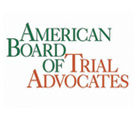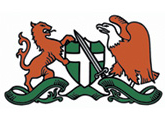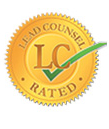Involvement in a car accident or other negligent situation can be a devastating experience. One issue that will linger in your mind is how you can recover compensation for the injuries and losses you suffer from the incident. In most cases, the negligent party will be liable for your injuries. However, liability in car accidents is not always automatic, there are times when more than one party acted with negligence, and thus the liability is shared.
The phrase “Joint and several liability” is a principle that requires all defendants from an injury lawsuit to be held liable for all economic damages and their share of non-economic damages. This law allows all the victims of car accidents to recover maximum compensation even when one defendant has no insurance or their coverage is insufficient to pay for the losses. The issues surrounding several and liability in California are complicated. Therefore, if you are a car accident victim, you must navigate your claim with the guidance of a skilled personal injury attorney.
What is Joint and Several Liability in California?
Several and joint liability is a legal term that defines shared responsibility between multiple parties in a lawsuit. If you are a victim of a car accident where the negligence of two or more individuals caused your accident and injuries, you can sue these parties independently. This allows you to recover full compensation for your economic damages from each party. For non-economic damages from your accident lawsuit, each liable party must compensate you for their share of fault in the accident.
The joint and several liability exists to ensure that you collect maximum compensation for your injuries without fearing that a defendant is insolvent. However, it is vital to understand that this law will only apply to your case when you prove that multiple parties are liable for your injuries. In lawsuits involving a single defendant, you can only recover an amount that the defendant's insurance company is capable of paying. With this law in place, each defeat is held liable for their involvement in the negligent accident.
Holding all involved parties responsible ensures that even defendants with the slightest percentage of fault for the accident are not let off the hook. With this, the court discourages future negligent acts.
Dynamics of Joint and Several Liability
Joint liability holds all parties in an accident lawsuit responsible for compensating the plaintiff. If one of the parties has no or insufficient auto insurance coverage, the other parties must pay more to cover the one who cannot pay. When you sue two or more people for your injuries in California, the court will not require proof of how the defendants caused you harm.
For example, if you are involved in a car accident involving a drunk driver and poor road conditions, you can sue the city council and the driver for your injuries. Although these parties caused your injuries differently, they can both be liable for your losses.
Advantages and Setbacks of the Joint and Several Liability Law
Some of the advantages of holding parties jointly and severally liable in your case include:
- You may have limited involvement in litigation. When you file a claim against multiple parties after your accident, your only responsibility is to establish liability for each party. By proving that each party breached their duty of care towards you and caused your injuries, you can recover compensation from both parties or either of them. The defendants, in this case, can decide how they will share liability. You will not need to be at the litigation. This allows you to focus on recovery from your injuries.
- You have a high chance of recovery. A claim involving several defendants will rarely end without compensation. Even when one of the defendants lacks the financial capacity to compensate you, you can recover from other defendants.
- Maximum compensation. Auto insurance covers limit the amount they can compensate a third party after an injury. Mostly, these assumptions are based on the damage they presume you suffered. However, in catastrophic accidents, you could suffer serious injuries and damage. In cases with one plaintiff, you must settle with the compensation you receive even when it does not cover your injuries. However, with this law on liability, you will recover different amounts from multiple people to reach the maximum awarded by the court.
- Deterrence of negligent behavior. Parties liable in a personal injury case are those whose negligence caused an accident. While following this law, each person involved pays for their negligence. Allowing some people to walk free could encourage other negligent behavior.
Even with these advantages, there are some setbacks to holding defendants jointly and severally liable, and some lawmakers push for reforms:
- Reasonable division of damages is not possible. You can sue each liable party with your economic damages and recover maximum compensation. Regardless of a defendant's contribution to the accident, they may pay a similar amount.
- Some parties pay more than others. Different people have varying insurance covers, and others do not even have insurance. If one of the liable parties does not have insurance or resources to compensate you, the individuals with more financial resources must pay extra to cover those who pay less. This could seem unfair to one of the parties.
The burden of Proof in Joint and Several Liability Cases
When you suffer an injury where multiple parties are at fault, you are responsible for establishing liability for each defendant. After establishing liability, the defendants proven to be liable for your accident are held accountable for the injuries. In California, liability is based on negligence. For each defendant in your lawsuit, you must prove these elements of negligence:
- Duty of care. Proving that a person owed you a duty of care is the easiest element of establishing liability. Most individuals involved in car accident claims owe you a duty of care in one form or another.
- Breach of duty. An individual breaches their duty of care towards you by acting in a way that puts you at risk of injuries or death. For each defendant in your accident lawsuit, you must establish how they breached their duty of care. It is important to understand that the conduct that amounts to a breach of duty can be similar or different for each liable party.
- Causation. The causation element involves the link between your injuries and a defendant's conduct. Often, this is the most challenging element of negligence to establish in cases with one defendant and multiple defendants. Before you proceed with this theory, you must prove that the conduct of each defendant was significant to your injuries.
- Damages. In any personal injury lawsuit, you must prove the type of damages you suffered from the accident. Damages could include medical expenses, lost wages, and pain or suffering. For several liability, economic damages are handled separately from the economic damages.
How Does Joint Liability Differ from Several Liability' in California?
While the terms several and joint liability are used together, there is a basic difference between the two and how they apply to your car accident lawsuit. Joint liability means that the court assigns liability for an accident and injuries to multiple parties involved in the accident.
For example, when you are injured in a truck accident, the truck driver and the trucking company could be held liable for your accident. Therefore, you can file a lawsuit against both parties, and the court determines who must compensate you for the injuries. However, the court makes a judgment on one of the defendants, and they can decide how to share the damages.
On the other hand, several liability is the situation where all the liable parties in your accident must compensate you for their contribution to the accident or injuries.
Liability for Economic Losses
Economic loss in a car accident is the damage that you can equate to a dollar value. These damages will cover the expenses you incurred or will incur later due to your injuries. Some of the economic damages available in an accident lawsuit include:
- Medical expenses for your injuries. Most accidents result in serious injuries. The accumulation of medical bills begins when an ambulance takes you to a medical facility and may not stop even in the future. Some injuries leave permanent disability and require you to seek future medical care and rehabilitation. Liable parties in your car accident are responsible for these medical bills as long as you can present proof of the injuries and treatment.
- Loss of income. Lost income is the amount of money you lose when you do not report back to work after an accident. Often, some injuries require you to spend some time in hospital, and thus you cannot resume normal work. In personal injury cases, lost income is in the form of monthly salary, bonuses, overtime, and income from self-employment.
- Lost future earnings. In addition to paying you for the lost income, liable parties in your lawsuit must compensate you for the lost future earnings. You lose your ability to work and earn a living when your injuries are severe or cause disability. While this damage hasn't occurred, your attorney can help you recover compensation.
When multiple liable parties are in your lawsuit, each defendant is liable for the total amount of the economic losses. This will mean that when you are successful in your trial, and your economic damage is established, either of the liable individuals can shoulder responsibility for the entire amount.
When you sue multiple parties for a large compensation in economic losses, one person may be unable to pay you due to a lack of resources or insufficient insurance coverage. In this case, you will collect what you can receive from them and the rest from other defendants.
Contribution Suits
Contribution is the legal action that the parties involved in your accident file against each other. When the court holds one defendant solely liable for your economic damages, they can sue other defendants for the part they played in the accident. The contribution will not apply when the party paying for your damages caused the accident intentionally. However, if liability on all parties resulted from willful and intentional acts, the court will accept the contribution suit.
If you suffer injuries in a car accident, your involvement in the legal proceedings ends when you recover your compensation. The contribution is a proceeding for the liable parties, and your involvement is unnecessary.
If the contribution suit reaches trial, the judge or jury will determine each person's fault percentage. In this case, the paying party can sue the person who did not contribute to your compensation.
Instances When Joint and Several Liability is not Applicable
Joint liability does not apply when seeking compensation for your non-economic losses in a California car accident lawsuit. Each party you sue is responsible for these losses depending on the percentage of their fault in the accident. In this case, the court may require a defendant to pay you 100% of your economic damages and a percentage of the non-economic damages.
Non-economic losses in car accident claims are those damages that are not attached to monetary expenses. These damages are more challenging to prove, and the judge determines their value. All defendants in your lawsuit are liable for the following non-economic losses:
- Pain and suffering. Most accident injuries are accompanied by serious physical pain. The emotional suffering and trauma from the accident could also affect your life. Although you cannot put a dollar value on pain, liable parties must compensate you for these damages.
- Lost consortium. If a loved one suffers an injury, you lose the love, support, and intimacy they would have offered. The parties liable for the accident must compensate you for the loss.
- Loss of life enjoyment. Your life changes completely after suffering injuries in a car accident. The pain and possible disability could prevent you from enjoying the fun activities you engaged in before the accident.
- Disfigurement is any unpleasant bodily changes resulting from an accident or other injuries. Having such scars can significantly impact your appearance and sometimes your self-esteem.
There are no caps for non-economic damages in California. The judge will assess your case and determine what you deserve for these damages. Sometimes, the severity of your injuries and the nature of your economic damages can play a role in the value of your non-economic loss.
The court is also responsible for determining each defendant's liability percentage. Unlike for economic damages, a plaintiff cannot collect full compensation for non-economic damages from a single defendant.
Effects of Joint and Several Liability in my Claim Approach
When you decide to file a personal injury or wrongful death claim following involvement in an accident, the joint and several liabilities will affect how you approach your claim in many ways. The first impact this theory will have is the targets in your claim. Some assume that the accident's main contributor is solely responsible for their injuries.
However, when this person cannot compensate you, you could be left to shoulder the financial burden for your injuries. If the joint or several liability applies to your case, you can change who to sue and file claims on all individuals involved in the accident.
Second, there will be a drastic change in how you investigate the circumstances around the accident. With multiple defendants, you must broaden your search for the causes of the accident. Additionally, you must identify all liable parties and their conduct before and after the accident. This helps ensure sufficient evidence to tie down all the liable parties to the accident.
Finally, you must change your approach to an insurance claim and trial strategy while considering the other parties in the case. Your strategy must account for the person or people from whom you see compensation. Additionally, you must investigate their ability to pay if the judgment for your economic damages falls on them.
Find a Competent Los Angeles Car Accident Attorney Near Me
After an accident or other negligent acts, you are entitled to compensation for your injuries. One of the most important aspects of recovering compensation is establishing negligence and liability. While there are cases where liability is automatic, some cases involve multiple liable parties. In California, two or more parties can be held liable for the full amount of damages you suffered in a negligent accident.
Joint and several liability is an adapted version of the common laws, which states that multiple parties could be jointly responsible for the full amount of your economic damages. Additionally, if you seek compensation for non-economic damages, the court requires that each defendant compensate you for their percentage of fault in your accident. Knowing the basic rules does not mean your journey towards recovering compensation is easy. Therefore, seeking legal guidance is a vital step in your case.
At Los Angeles Car Accident Attorney, we use our knowledge of California's joint and several liability to guide our clients through the steps of recovering maximum compensation for accident claims in Los Angeles, CA. Call us today at 424-237-3600 to discuss the details of your claim.






